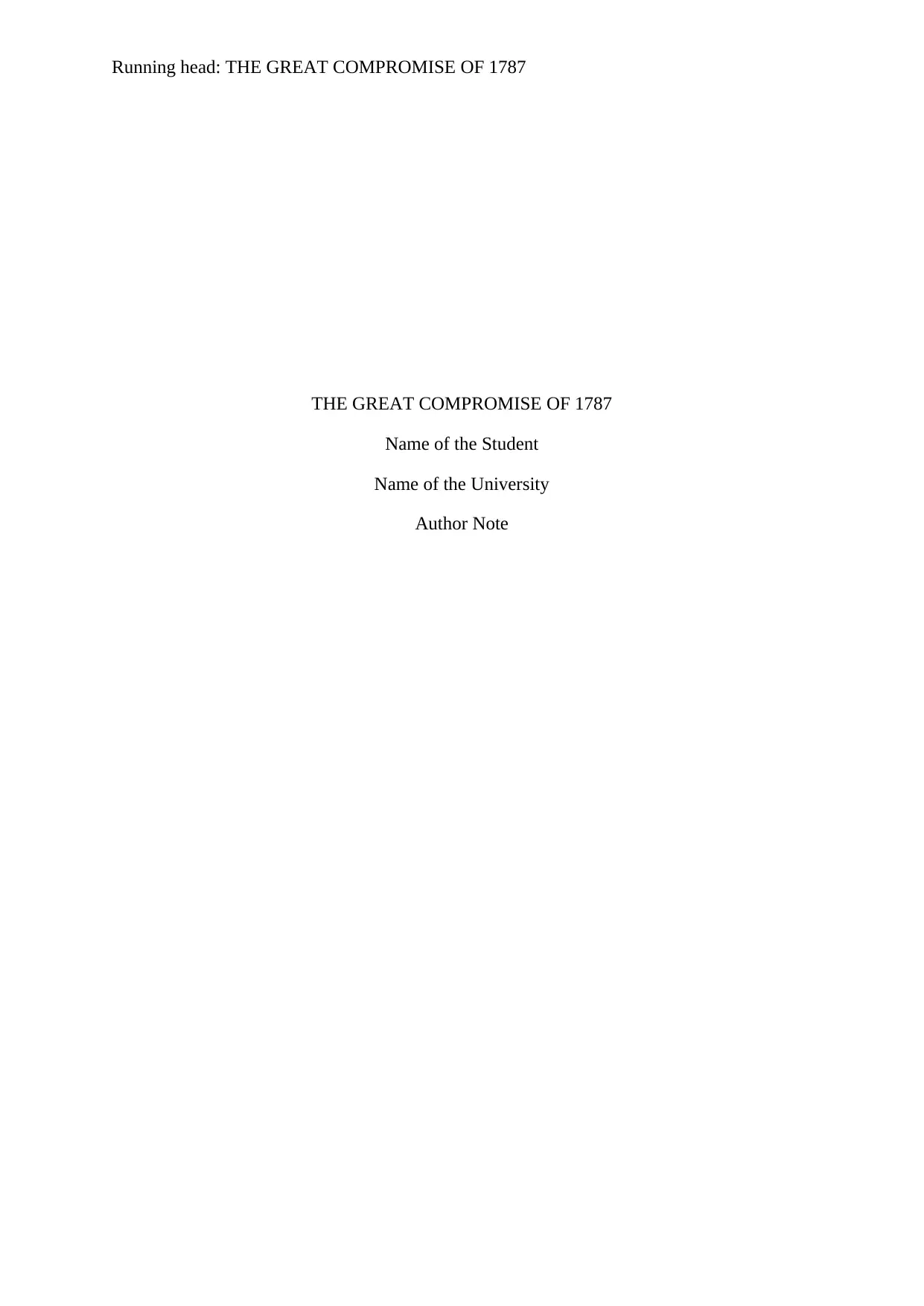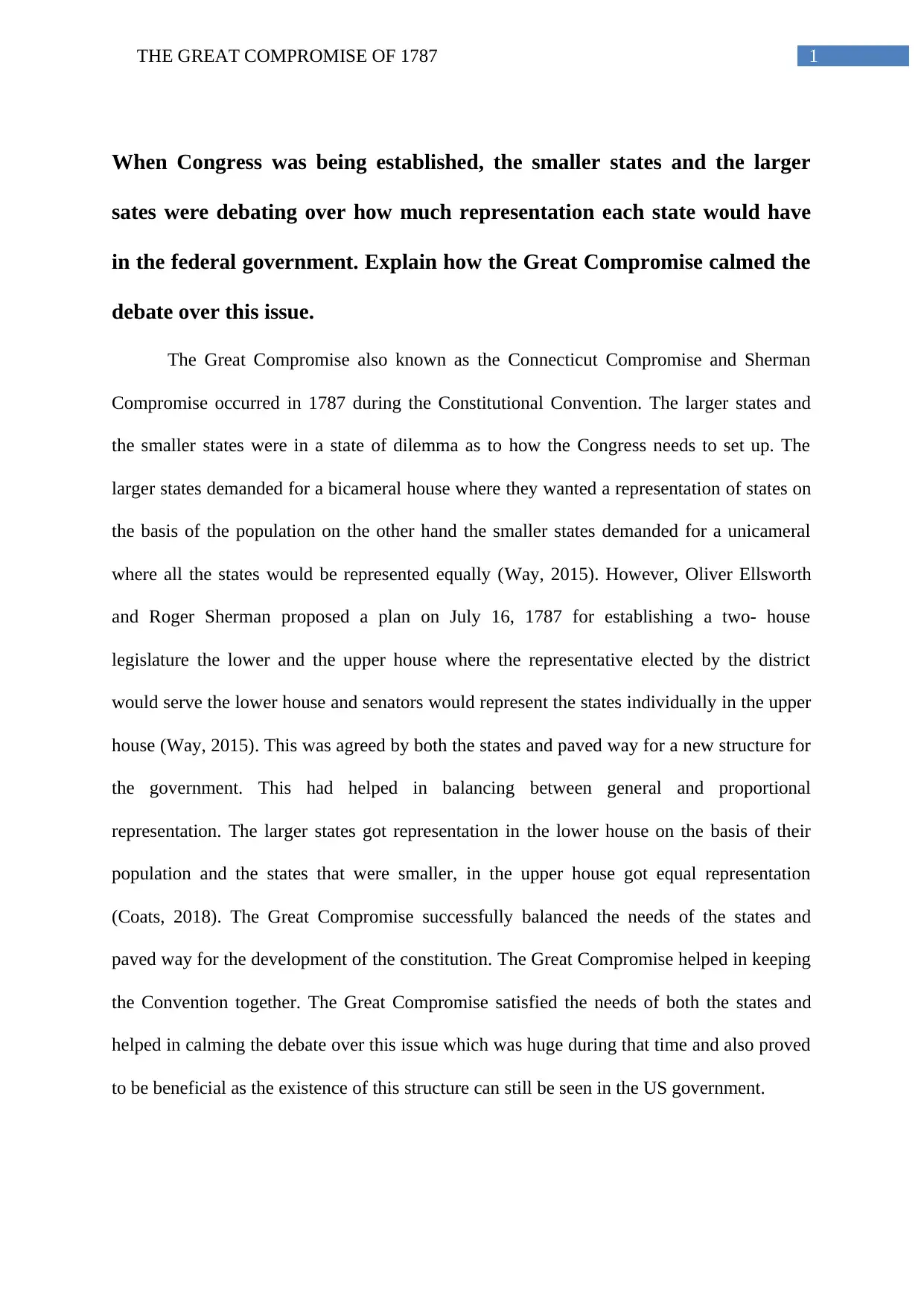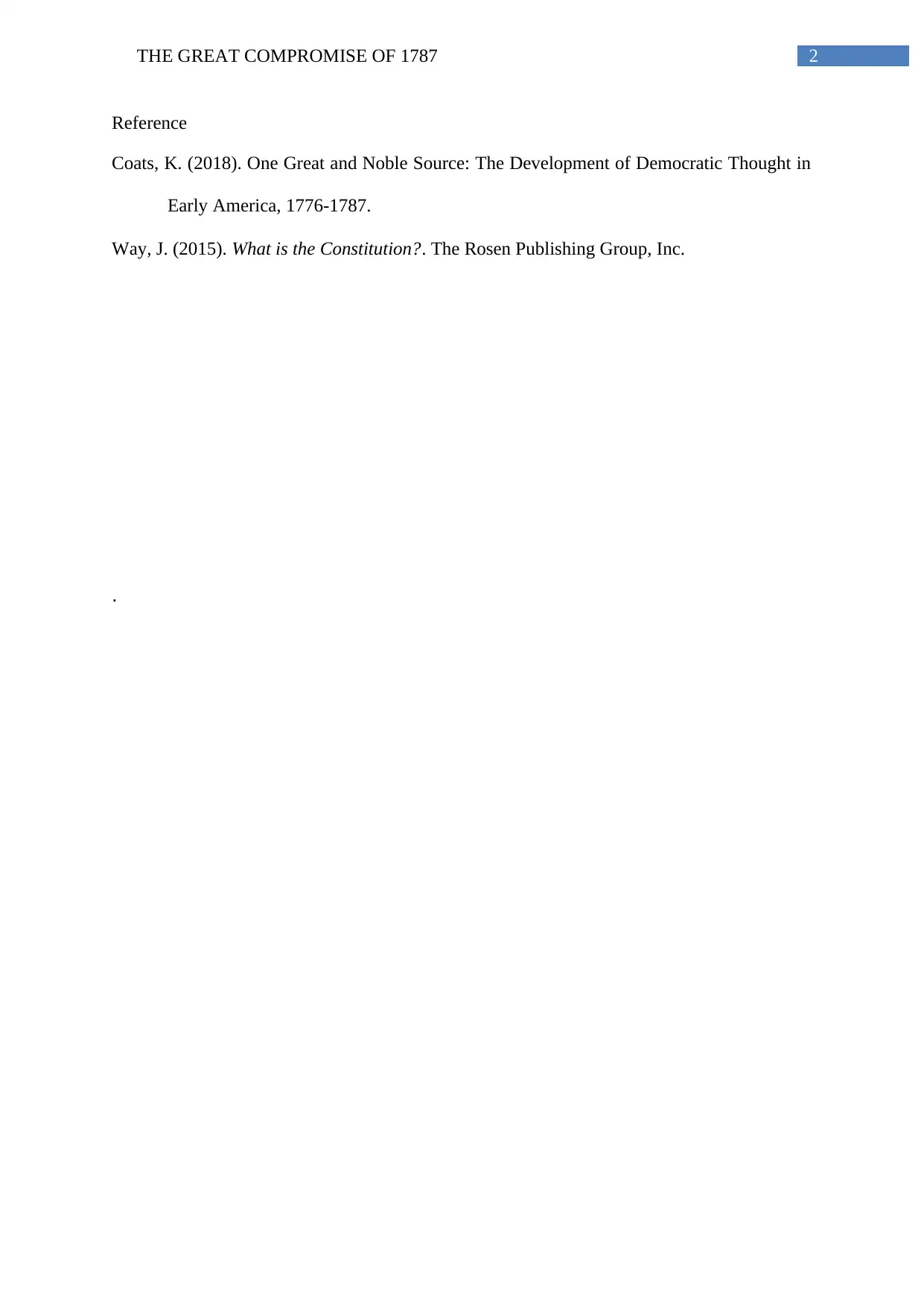Analyzing the Great Compromise of 1787 and its Impact on Congress
VerifiedAdded on 2023/04/23
|3
|406
|491
Essay
AI Summary
The essay examines the Great Compromise of 1787, also known as the Connecticut Compromise, which addressed the contentious issue of state representation in the newly forming US Congress. The compromise, proposed by Oliver Ellsworth and Roger Sherman, established a bicameral legislature with a lower house (House of Representatives) based on population and an upper house (Senate) with equal representation for each state. This balanced the interests of both larger and smaller states, paving the way for the Constitution's development and preserving the unity of the Constitutional Convention. The essay highlights how this compromise successfully calmed the debate over representation and its enduring impact on the structure of the US government.
1 out of 3





![[object Object]](/_next/static/media/star-bottom.7253800d.svg)